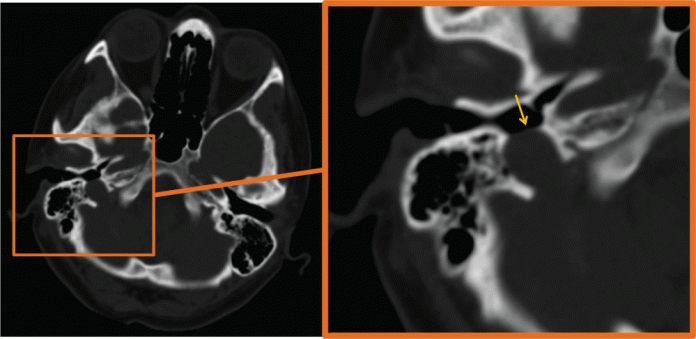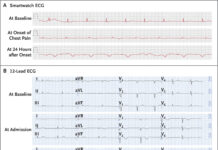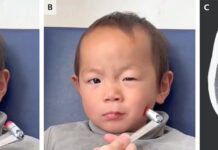
A ringing sensation in the ear unveiled to be an anomaly
A 41-year-old female presented with complaints of a ringing sensation in the right ear for the past 2 years. The patient was admitted for further evaluation of tinnitus.
Doctors performed a temporal bone computed tomography scan, which revealed a right dehiscent high riding jugular bulb. The right sigmoid plate was absent.
A jugular bulb is the dilation of the bulbous part of the jugular vein. Normally, it is located on the hypotympanum floor, a bony sigmoid plate covers it.
Tinnitus and more in jugular bulb anomaly:
There can be anomalies of the jugular bulb, such as a high-riding jugular bulb, dehiscent jugular bulb, etc. Patients may present with complaints of tinnitus, conductive hearing loss, dizziness, and vertigo, but it can also be found in asymptomatic patients.
A dehiscent jugular bulb is a rare anatomical variation of the jugular vein with a superior-lateral extension of the jugular bulb into the middle-ear cavity. Dehiscence is the absence of the bony wall (sigmoid) between the jugular foramen and the middle ear cavity. It is one of the common causes of pulsatile tinnitus. On otoscopy, it appears as a bluish (red-purplish) pulsatile mass.
It is imperative to be aware of this anatomical variant, as it may lead to complications secondary to injury during middle ear surgery.
References:
Koo YH, Lee JY, Lee JD, Hong HS. Dehiscent high-riding jugular bulb presenting as conductive hearing loss: A case report. Medicine (Baltimore). 2018;97(26):e11067. doi:10.1097/MD.0000000000011067
Erdogan H, Arslan S, Arslan FZ, Durmaz MS, Cengiz A (2017) Dehiscent High Jugular Bulb. Clin Med Img Lib 3:065. doi.org/10.23937/2474-3682/1510065



